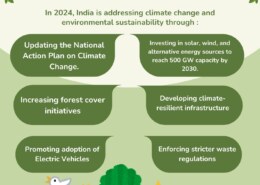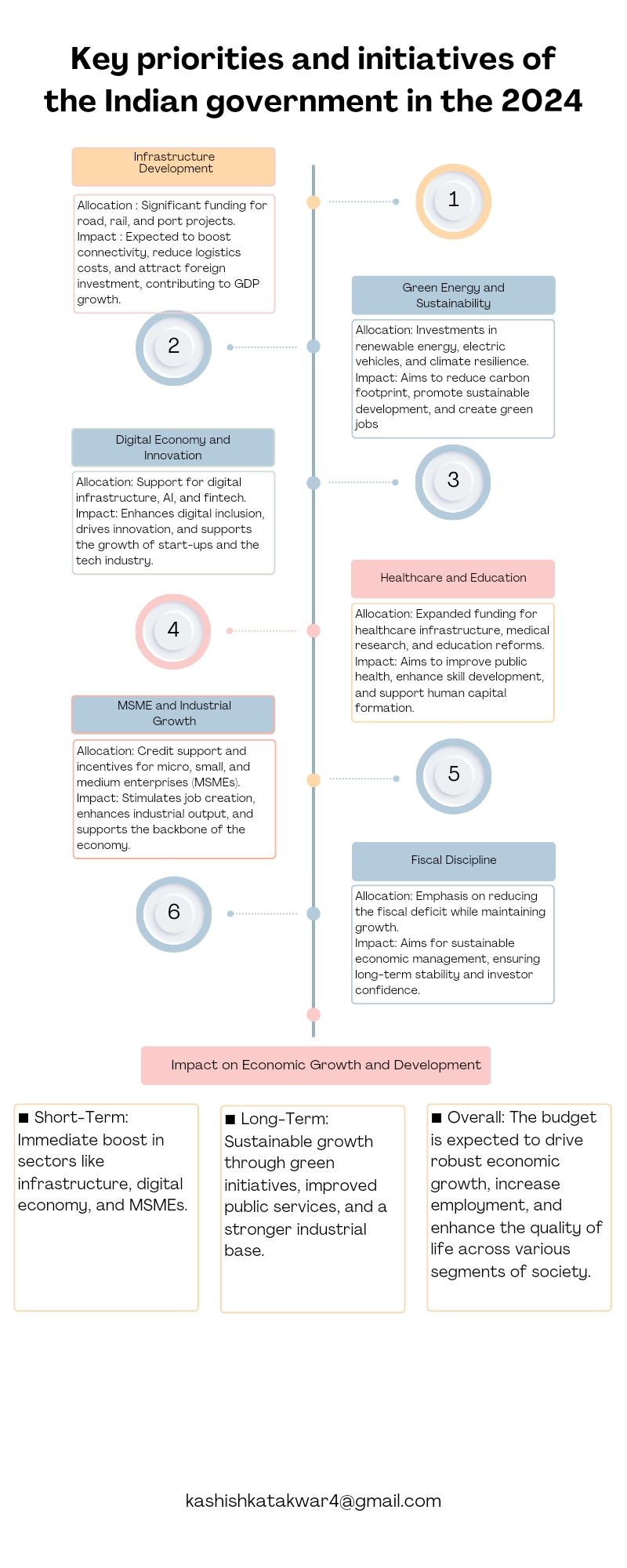In 2024, India is actively addressing climate change and environmental sustainability through various policies and actions. Here are six significant measures being taken: 1. National Action Plan on Climate Change (NAPCC) Enhancement: India has updated its NAPCC to include more ambitious targets forRead more
In 2024, India is actively addressing climate change and environmental sustainability through various policies and actions. Here are six significant measures being taken:
1. National Action Plan on Climate Change (NAPCC) Enhancement: India has updated its NAPCC to include more ambitious targets for renewable energy, energy efficiency, and climate resilience. This includes expanding the scope of the existing missions and introducing new missions focused on sustainable agriculture and green transport.
2. Renewable Energy Expansion: India continues to invest heavily in renewable energy, with a target to achieve 500 GW of renewable energy capacity by 2030. Significant investments are being made in solar and wind power projects, along with initiatives to promote the use of biofuels and hydrogen as alternative energy sources.
3. Afforestation and Reforestation Programs: Initiatives like the Green India Mission and state-level programs aim to increase forest cover and restore degraded ecosystems. These efforts contribute to carbon sequestration, biodiversity conservation, and the enhancement of ecosystem services.
4. Promotion of Electric Vehicles (EVs): To reduce carbon emissions from the transportation sector, India is promoting the adoption of electric vehicles through subsidies, tax incentives, and the development of EV charging infrastructure. Policies aim to make EVs more affordable and accessible to the general population.
5. Waste Management and Plastic Ban: India is enforcing stricter regulations on waste management, including solid waste and electronic waste. Additionally, the government has implemented a nationwide ban on single-use plastics, encouraging the use of sustainable alternatives and promoting recycling.
6. Climate-Resilient Infrastructure: Investments are being made in developing infrastructure that can withstand the impacts of climate change, such as extreme weather events and rising sea levels. This includes building climate-resilient urban infrastructure, improving water management systems, and enhancing disaster preparedness and response mechanisms.
See less


Reforming India’s healthcare system is a multifaceted challenge that requires comprehensive policy reforms and effective strategies. India’s current healthcare system is characterized by the dual burden of communicable and non-communicable diseases, lack of public health resources, and wide disparitRead more
Reforming India’s healthcare system is a multifaceted challenge that requires comprehensive policy reforms and effective strategies. India’s current healthcare system is characterized by the dual burden of communicable and non-communicable diseases, lack of public health resources, and wide disparities in access to and access to healthcare services between urban and rural areas. As proposed in the National Health Policy 2017, the key to economic transformation is to increase public healthcare expenditure as a share of GDP to at least 2.5%. There is a severe shortage of doctors. Improving the use of technology through digital health initiatives such as telemedicine and health information can address inequalities in service delivery and increase efficiency.
Additionally, integrating traditional and modern medicine with quality control syst ems can increase access to and affordability of healthcare for all. Public-private partnerships, investment in healthcare, and a focus on preventive care are also critical to healthcare reform. Addressing health determinants such as sanitation, nutrition, and education is essential to improving overall health and realizing India’s health vision.
See less